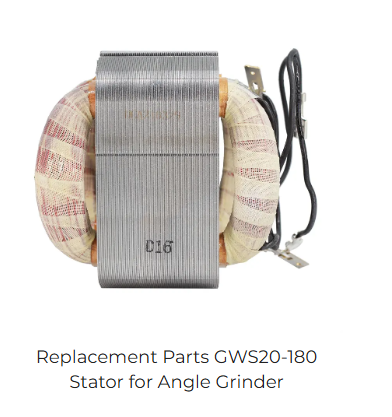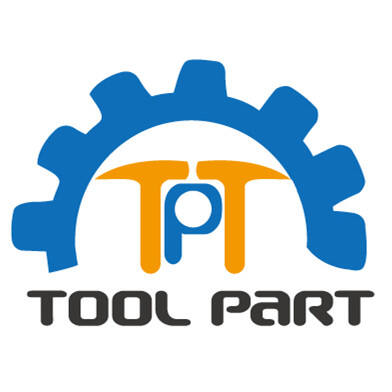Key Factors in Stator Selection for Optimal Motor Performance
Understanding the Stator's Role in Torque-Power Requirements
At the heart of every motor lies the stator, an essential part that turns electricity into magnetism, creating the force needed for torque and power generation. Without this basic function, motors simply wouldn't work properly. Studies from engineering labs around the world show that how we design these stators makes a real difference in how efficiently systems run. When picking out stators, manufacturers need to pay close attention to details because small changes can impact performance significantly. Different industries require different approaches too. Automotive engineers might need stators built for high speed but lower heat resistance, while aerospace applications demand materials that withstand extreme temperatures. Industrial machinery often requires custom designs to handle heavy loads over long periods. Getting this right means motors will perform reliably whether they're running at full capacity or dealing with fluctuating workloads throughout the day.
Matching Stator Diameter and Stack Length to Application Needs
Getting the stator diameter and stack length right makes all the difference when it comes to making motors work well for their intended purpose. Take a look at what's out there these days, and we see that electric vehicle traction motors need completely different specs compared to those tiny motors inside handheld power tools. The trick is finding that sweet spot where efficiency doesn't get sacrificed just to boost power output. Most engineers will tell anyone who asks that running simulations or checking out how similar motors performed in practice gives much better results than guessing. When done properly, this kind of careful planning leads to motors that run cleaner and last longer. Plus, nobody wants to waste electricity on something that could have been designed better from the start.
Assessing Core Losses via Lamination Steel Frequency Response
The core losses in motors come mostly from hysteresis effects and those pesky eddy currents, and they really drag down efficiency. Getting the right lamination steel makes all the difference when trying to cut down on these losses and boost power output. Looking at frequency response helps figure out which materials work best at different operating frequencies, making it easier to pick the right stuff for the job. Most industries have established guidelines about what kinds of laminations should be used because they know these materials reduce losses and improve motor performance across the board. Following those standards plus careful material picking lets manufacturers build motors that run strong without wasting too much energy.
Electrical Design Considerations for Efficient Stators
Selecting Winding Configurations for Voltage/Current Demands
How the stator windings are arranged plays a major role in what kind of efficiency, voltage levels, and current capacity a motor will have. Getting this right makes all the difference for how well the motor actually performs. Take star (Y) versus delta (Δ) setups as examples these different arrangements change the phase angles which affects motor efficiency depending on operating conditions. Studies show that when manufacturers tailor winding patterns specifically for their needs, they get better electrical results plus longer lasting motors too. Good winding design means motors run smoothly while meeting exact specifications required across many industries from factory equipment to cars on the road today.
Wire Gauge Optimization for Thermal and Electrical Efficiency
Getting the right wire gauge makes all the difference when it comes to cutting down on resistive losses inside a stator, which ultimately improves both how hot things get and how well electricity flows through the system. When selecting the proper gauge, engineers need to make sure the wire can carry the required current without melting down or damaging the insulation around it. Finding this sweet spot between wire thickness and what the motor actually needs isn't just important it matters a lot. Research indicates that getting this wrong leads to wasted energy and higher bills for anyone running motors day in and day out. Motor designers spend considerable time figuring out the best wire sizes because they know these choices affect performance across different loads and operating conditions over the life of the equipment.
Thermal Management and Material Selection
Insulation Class Requirements for High-Temperature Operations
Choosing the correct insulation class matters a lot when dealing with motors exposed to high temperatures. Each insulation class handles different temperature ranges, so the motor parts can survive the heat they face day after day without breaking down too soon. When the insulation matches what the motor actually experiences during operation, it lasts longer and works better over time. Research from the Journal of Electrical Engineering points out that newer insulation materials make motors last much longer and perform better in tough conditions. Motors running in industrial settings where temperatures fluctuate constantly benefit especially from these improvements.
Evaluating Slot Fill Ratio for Heat Dissipation
The slot fill ratio in motors plays a key role in how well they dissipate heat, which directly affects their performance and efficiency levels. When engineers properly assess this ratio, they can significantly improve cooling capabilities, eliminate those pesky hot spots, and boost how effectively the motor operates day to day. Studies from various manufacturers show that motors designed with the right slot fill ratio typically operate at cooler temperatures, which translates to better overall performance across different load conditions. Getting the slot fill distribution right helps reduce the thermal stress placed on critical motor parts like windings and insulation materials. This not only makes the motor last longer but also maintains its full operational power output over extended periods of service.

Mechanical Compatibility and Precision Manufacturing
Achieving Rotor-Housing Alignment Through Tolerance Analysis
Getting the rotor housing aligned correctly matters a lot when it comes to cutting down on friction and wear inside motors. When manufacturers stick to tight tolerances during production, they create conditions where components fit together just right so everything runs smoothly and lasts longer. If things aren't lined up properly though, vibrations start building up, and these small problems tend to grow into bigger mechanical issues eventually. Motor specialists often point out that investing in better manufacturing methods with strict tolerance requirements makes all the difference here. These tighter specs mean fewer alignment problems down the road, which translates to less friction and stronger structural stability. Techniques such as detailed tolerance analysis come in handy too. They let engineers spot those tiny misalignments early on and fix them before they become major headaches, ultimately making motors work better and last much longer than they would otherwise.
Bolt Pattern Design for Vibration Resistance
The way bolts are arranged around a motor makes all the difference when it comes to how well the motor handles vibrations and maintains its structure over time. When engineers design bolt patterns that actually dampen rather than transmit vibrations, electric motors tend to last longer and perform better under stress. Getting those bolts right means forces spread out evenly throughout the motor housing, which cuts down on metal fatigue spots that often lead to breakdowns. Some recent work shows that custom fastening solutions for different motor types can boost both longevity and power efficiency by quite a margin. This matters a lot for things like electric vehicle motors, where manufacturers are constantly trying to shave off grams while keeping output high enough for real world driving conditions. Motor builders who invest in smart bolt configurations typically see fewer field failures and happier customers down the road.
Advanced Stator Technologies for Specialized Applications
Slotless vs Slotted Stators: Cogging vs Torque Density Tradeoffs
Knowing when to choose slotless versus slotted stators makes a big difference in motor performance for different applications. Slotless designs cut down on cogging torque significantly, which means smoother running motors overall. The downside? They tend to deliver lower torque density compared to other options, something that matters a lot in certain industrial settings. On the flip side, slotted stators (or iron core motors as they're sometimes called) pack much more punch in terms of torque output, making them great for applications where rapid acceleration is needed. But there's always a catch – these motors suffer from higher levels of cogging because the permanent magnets line up with the stator teeth during operation, causing those annoying torque ripples. Engineers working on motor selection need to weigh these factors carefully based on what the actual application demands most from the system.
PCB Stator Innovations in Axial Flux Motors
PCB stators are changing the game for axial flux motor design by enabling much tighter and more efficient motor builds than traditional methods. They boost power output per unit volume while reducing both the amount of materials needed and overall manufacturing complexity. We're seeing this technology gain traction across various sectors lately because companies want motors that pack more punch without adding bulk or expense. What makes these stators so attractive is how they give engineers real freedom when designing motors, something manufacturers desperately need as they chase after those ever-elusive goals of miniaturization, weight reduction, and better energy consumption. For industrial players looking to stay ahead in competitive markets where every watt counts, switching to PCB stator technology isn't just smart business it's becoming practically essential.
Validation and Testing Protocols
Prototyping Methods for Real-World Performance Verification
When developing motors, prototyping remains one of those essential steps nobody wants to skip if they want their designs to actually work in the real world. During this phase, engineers get hands-on experience adjusting all sorts of motor components, fixing issues long before mass production starts rolling out. Most shops rely on techniques like rapid prototyping and iterative testing to mimic how motors perform under actual operating conditions. These tests give valuable information about everything from efficiency ratings to heat dissipation problems. Industry reports consistently show that companies investing properly in prototyping cut down their time getting products to market by around 30% while making better quality end results. Skip this part? Well, let's just say customers tend to notice when products don't live up to what was promised on paper.
Measuring Torque Ripple and Thermal Limits
Looking at torque ripple and thermal limits helps figure out how well a motor performs when it's actually doing work. Getting good measurements here makes sure the motor delivers what it promises in terms of power efficiency while avoiding problems like overheating after long periods of operation. New testing methods have made these measurements much better lately, which is why we see so many improvements in motor performance today. Most industries have set standards for acceptable torque ripple levels that guide engineers during both design and testing phases. Following these guidelines matters a lot if manufacturers want to build motors that last and perform reliably across different applications. Keeping within thermal limits means motors run smoothly without putting unnecessary strain on components, which ultimately extends their life span significantly.
FAQ
What role does the stator play in a motor's performance?
The stator converts electrical energy into magnetic energy, directly influencing the motor's torque and power production, which is crucial for the overall motor performance.
How do core losses affect motor efficiency?
Core losses, arising due to hysteresis and eddy currents, reduce motor efficiency by consuming energy that could otherwise be used for productive work. Minimizing these losses through material selection enhances overall efficiency.
Why is the choice of winding configuration important?
The winding configuration affects the motor's efficiency, voltage, and current ratings, optimizing motor performance and extending the motor's lifespan.
What are slotless and slotted stators?
Slotless stators minimize cogging torque for smoother operations but reduce torque density. Slotted stators offer high torque density, important for high-acceleration tasks, but may increase cogging.
Table of Contents
- Key Factors in Stator Selection for Optimal Motor Performance
- Electrical Design Considerations for Efficient Stators
- Thermal Management and Material Selection
- Mechanical Compatibility and Precision Manufacturing
- Advanced Stator Technologies for Specialized Applications
- Validation and Testing Protocols
- FAQ

